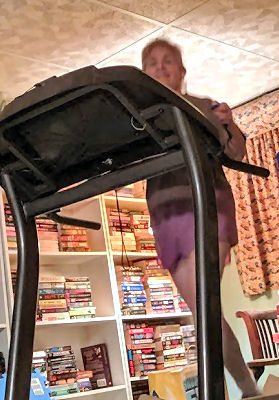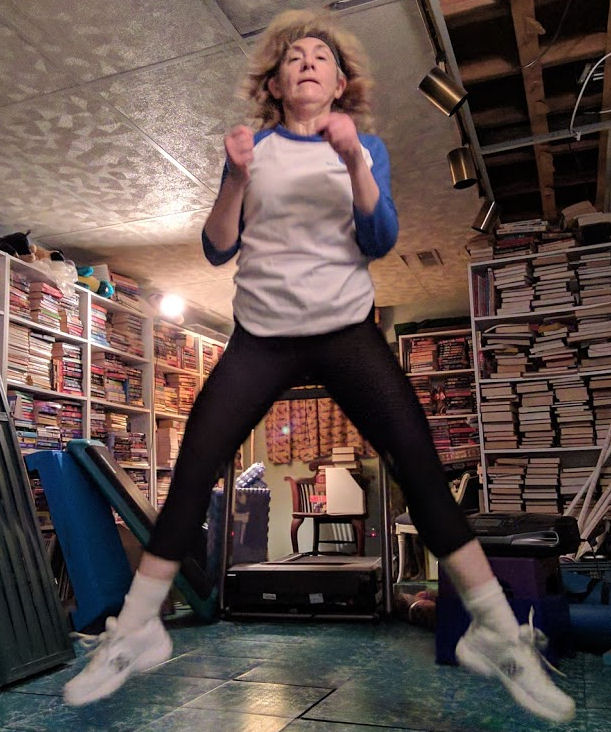I’ve been writing about optimism quite a bit lately. Perhaps because the times we live in are so stressful, I feel the need to try to rise above the stress and bring others along with me. It’s natural to have down days as well as optimistic ones. And of course, things can happen throughout the day even if you start out optimistic to cause you to sit back and reflect, and possibly feel down. But that’s the easy route. Be bold – be optimistic.
One chance
The fact is, we only get one go-round in this life (that we know of). So I figure we might as well make the most of it. I’ve got enough wrinkles from my 65 years of living, I don’t have to manufacture more with frowning. When I feel down and recognize it, I try to bring myself out of the doldrums any way I can. Of course, sometimes I don’t recognize my bad moods and depressed thoughts, and it goes to others (mainly my sister) to figuratively slap me upside the head and take a look at myself and listen to what’s coming out of my mouth. Because when I’m feeling stressed, anxious and in a bad mood, I have the unfortunate tendency to take my bad mood out on others. Again, mainly my sister. For that, I sincerely apologize.
Smiles ahead
So how do you make a frown turn upside-down? Easy. Step one: just smile. Many times your thoughts go where your expression is. So if you’re feeling gloomy, put a huge smile on your face. Exaggerate it. Show lots of teeth. For five seconds. Not feeling so grouchy anymore, are you?
Move it
A great way to feel more optimistic is to move your body. This doesn’t have to be a full-fledged workout, although that is certain to do the trick, but if you get up and move to your favorite music, say, after a couple of tunes you’ll be on your way to optimism.
Exercise reduces bad moods and depression. That “exercise high” is not a myth! Regular exercise helps the brain produce a protein that seems to fortify parts of the hippocampus susceptible to depression, neuroscience has revealed. And Swedish researchers have found that exercise helps to keep your brain safe from harmful substances (one is called kynurenine) that build up during stress. Read more about how exercise will benefit you: https://fitness-over-50.com/2018/04/more-reasons-to-exercise/
Another great way to feel more optimistic (but perhaps not immediately) is to improve your diet. Research has shown that a cleaner diet kind of cleans out your brain too. So, cut back on the processed foods and eat more fruits and veggies. But watch the fruit because there’s a lot of sugar there. So eat more veggies.
Don’t think
Meditation has been shown to be a mood lifter too. You don’t have to be a serious yogi to meditate. Just find a comfortable position and clear your brain for a while. If clearing your brain is hard, you might want to try a guided meditation. And it doesn’t have to be long, either. As short a period as 3 minutes can make a huge difference.
Gravitate to Gratitude
Lastly, a sure-fire path to optimism and happiness is gratitude. You can have no place for unhappiness when you’re feeling grateful. And feeling grateful for something – anything – will set you far along on your path to happiness. It may seem too simple, but it’s true. Just by saying, “I’m grateful for the sunshine” will make my unhappiness go away? Perhaps not so easily, but you’re looking at the sun shining, squinting your eyes, and smiling, aren’t you? And smiling is a definite step to happiness.
And when you write down the things that you’re grateful for, when you journal your feelings of gratitude, your happiness will grow. Just the act of writing something down solidifies it. (That’s one reason we all took notes in class at school!) Of course, you can journal your gratitude on anything, but sometimes nothing comes immediately to mind. It’s OK if you have to look for things to be grateful for. Sometimes days are like that. So it’s helpful to have journaling prompts. This Gratitude and Happiness Journal not only has prompts, but also inspirational quotes to start you thinking along an optimistic path.
So, be bold. Be optimistic. You’ll stand out, and everyone will think, “Wow, she always seems so happy. I want to be like her!”









